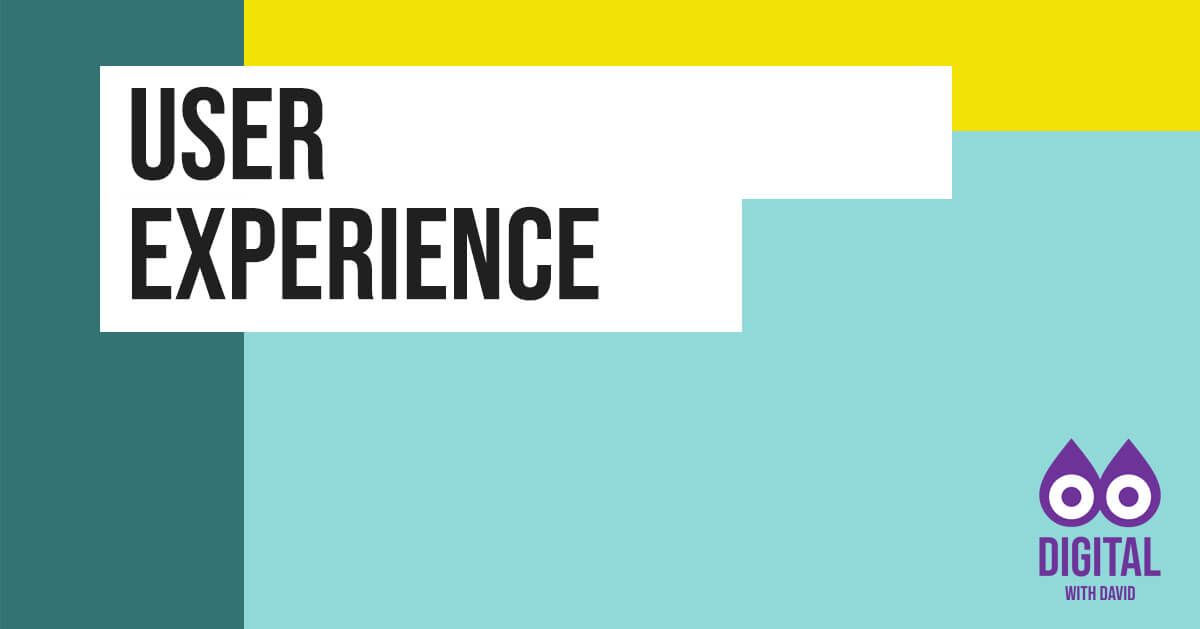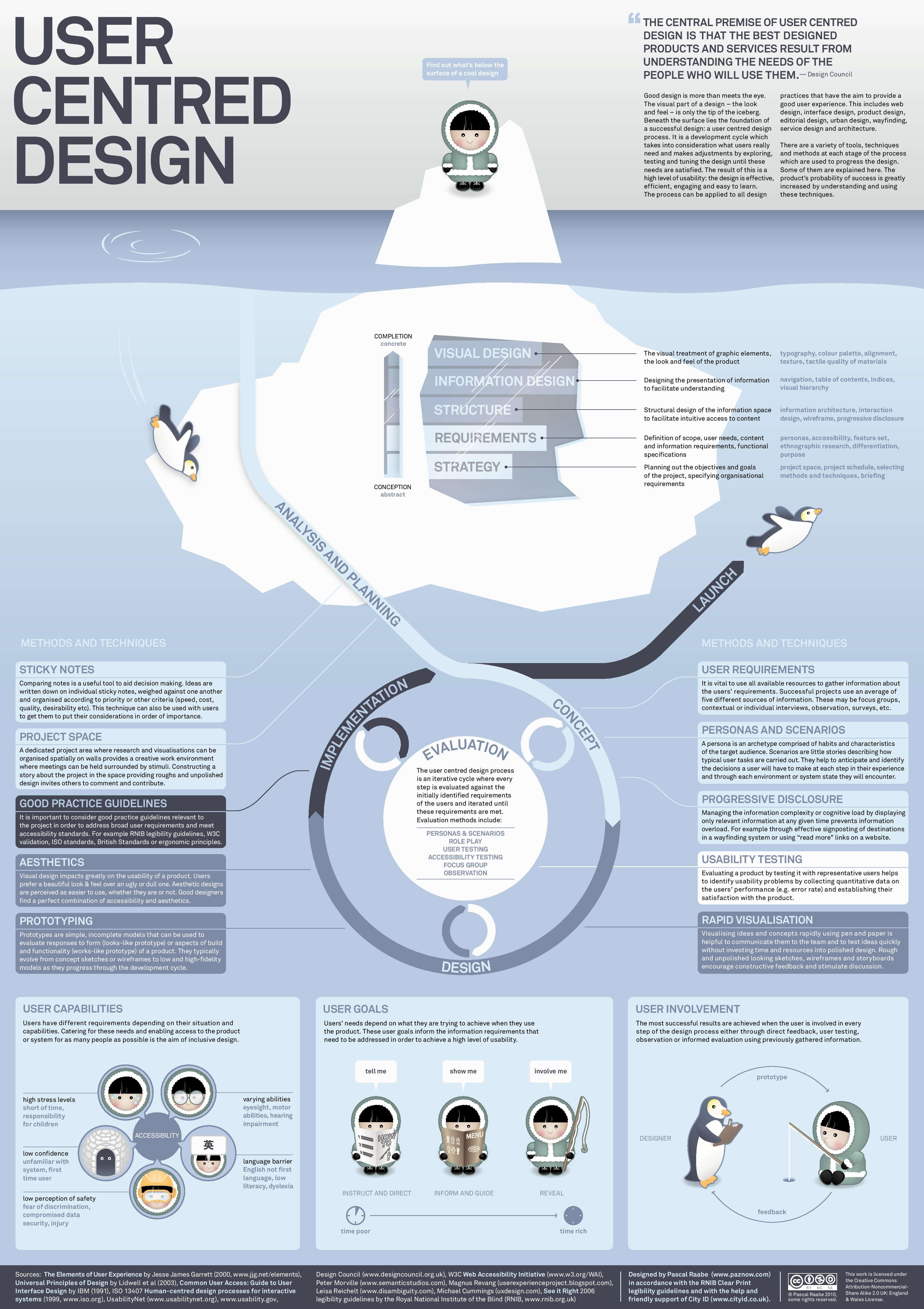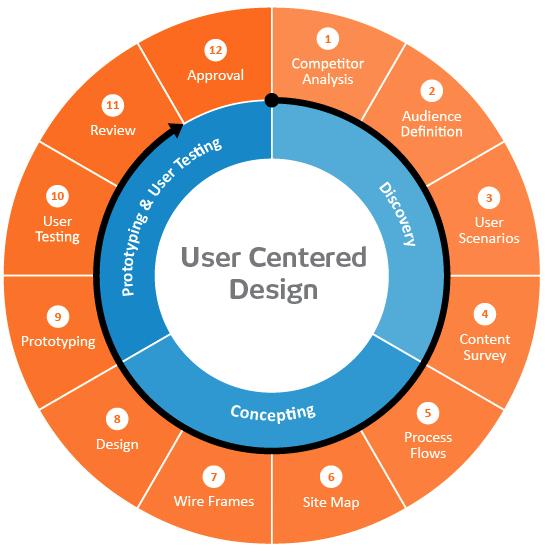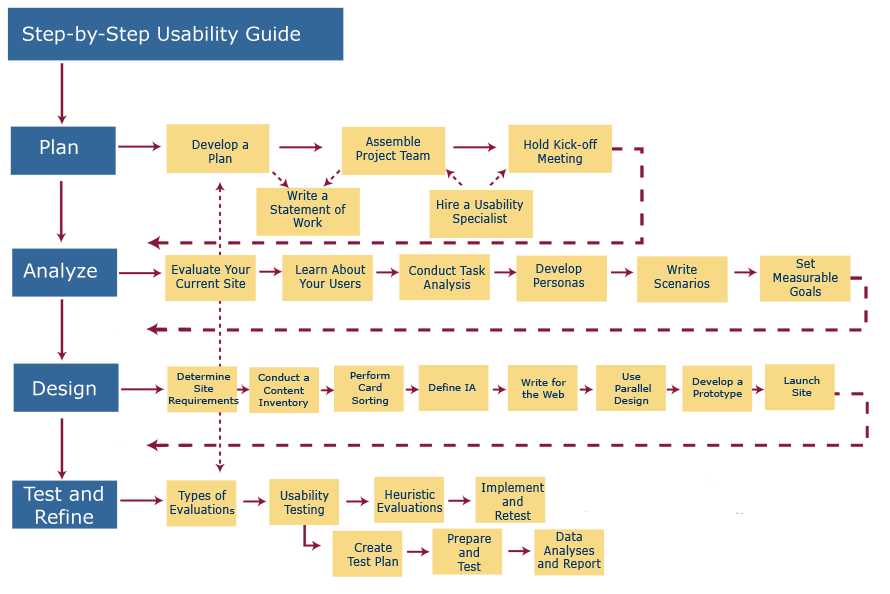The central premise of user centred design is that the best designed products and services result from understanding the needs of the people who will use them. (Design Council).
Good design is more than meets the eye.
The visual part of a design – the look and feel – is only the tip of the iceberg. Beneath the surface lies the foundation of a successful design: a user centred design process. It is a development cycle which takes into consideration what users really need and makes adjustments by exploring, testing and tuning the design until these needs are satisfied. The result of this is a high level of usability: the design is effective, efficient, engaging and easy to learn. The process can be applied to all design practices that have the aim to provide a good user experience. This includes web design, interface design, product design, editorial design, urban design, wayfinding, service design and architecture.
There are a variety of tools, techniques and methods at each stage of the process which are used to progress the design. Some of them are explained here. The product’s probability of success is greatly increased by understanding and using these techniques.
View interactive version of the above image.



